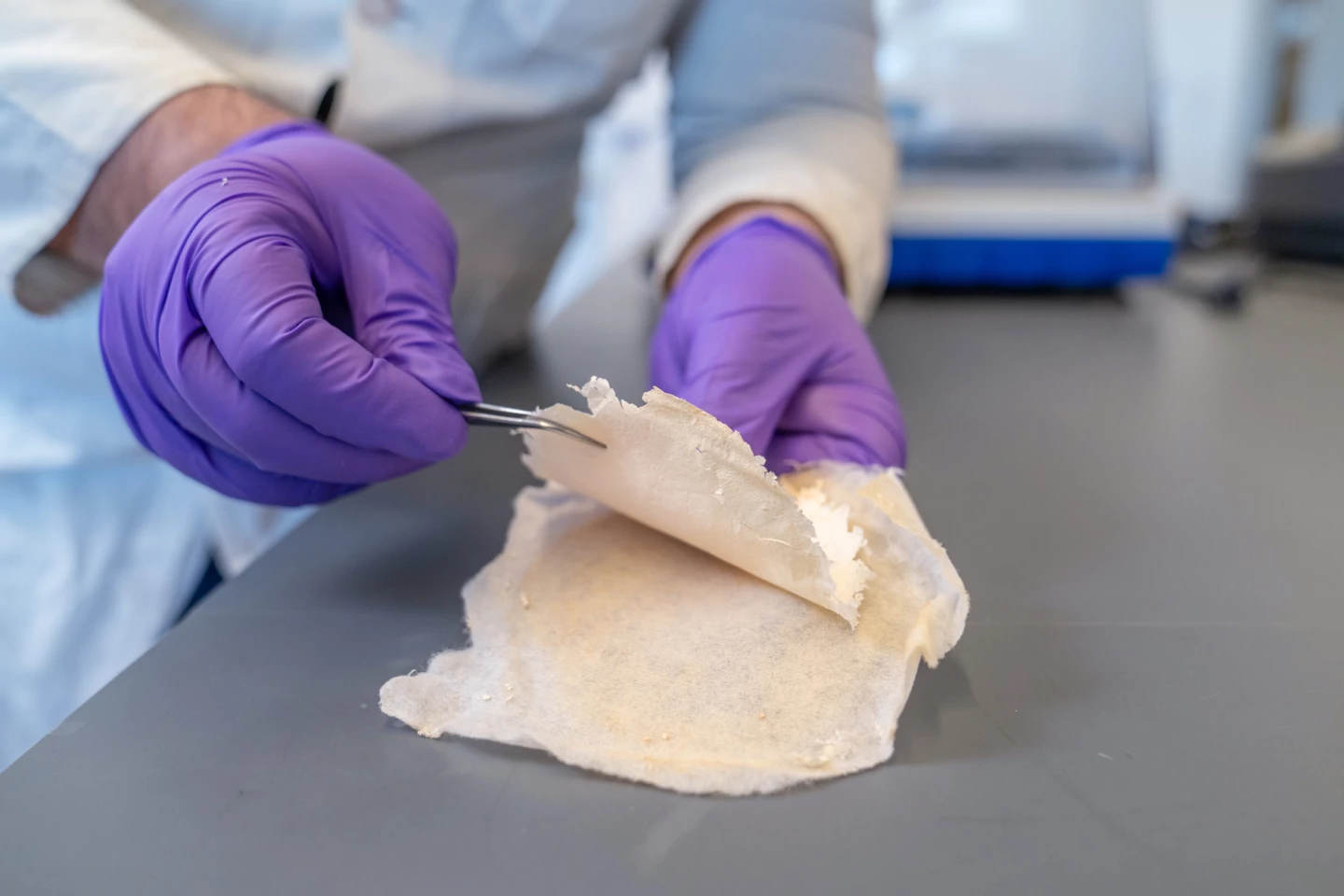While infected wounds definitely aren't a good thing, neither is the proliferation of antibiotic-resistant bacteria which may occur due to overuse of the drugs. That's where a new type of cotton bandage comes in, as it kills microbes without resorting to antibiotics.
Developed by Mohsen Alishahi and colleagues at Cornell University, the bandage incorporates an organic compound called lawsone (aka hennotannic acid).
This substance occurs naturally in henna leaves, and is known for its antioxidant, anti-inflammatory and antimicrobial properties. Because of its hydrophobic (water-repelling) nature, however, it can't be easily mixed into and suspended within a liquid solution. This limits its bioavailability, keeping it from being taken up well by the body.
In order to change that, the scientists combined lawsome with cyclodextrins, which are carbohydrates that have a hollow inner cavity along with a hydrophilic (water-attracting) outer surface. By "hiding" inside the cyclodextrin molecules, lawsome molecules were able to be thoroughly mixed into a liquid solution.
That lawsone/cyclodextrin solution was subsequently combined with non-toxic hydroxypropyl cellulose. Utilizing an electrospinning technique, the researchers next applied a uniform coating of that mixture to a regular cotton pad. The hydroxypropyl cellulose in that coating now took the form of nanoscale cellulose fibers, which boosted the solution's surface-to-volume ratio.

When lab-tested alongside pure lawsone, the coated cotton was found to have a much stronger antibiotic effect against both gram-negative and gram-positive bacteria. It was even more effective on E. coli and staphylococcus bacteria, which it effectively eradicated.
"Wound dressings should provide a suitable environment for facilitating healing and preventing infection," said Alishahi. "Using totally natural materials such as cotton, cyclodextrin and lawsone, this dressing can facilitate both as it has comprehensive antioxidant and antibacterial activity."
A paper on the research, which was funded by Cotton Incorporated, was recently published in the International Journal of Pharmaceutics.
Source: Cornell University





